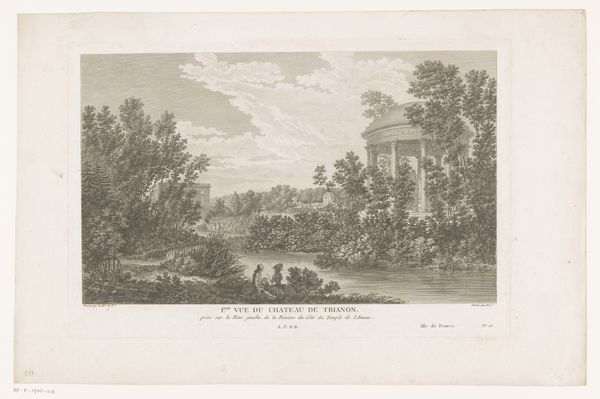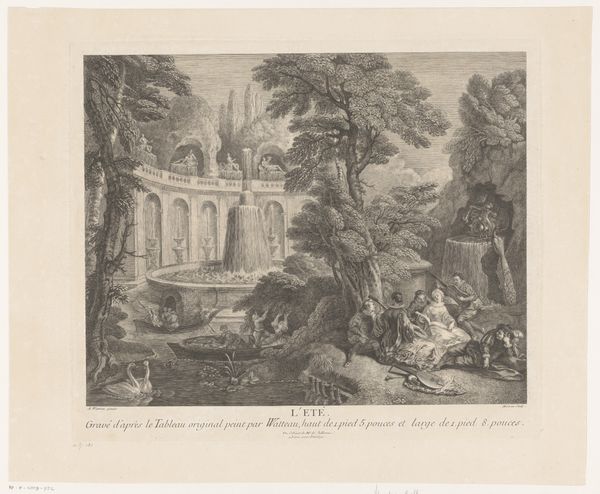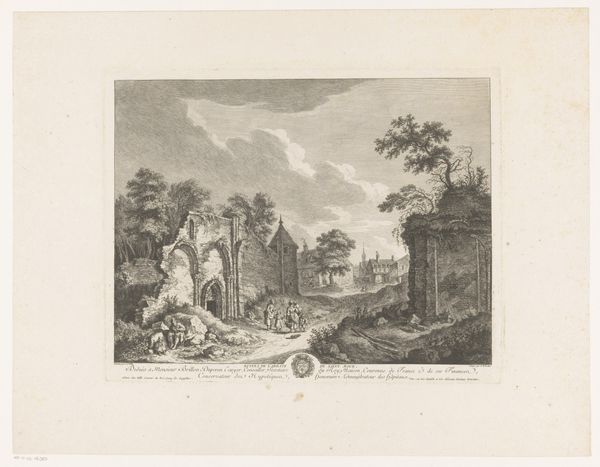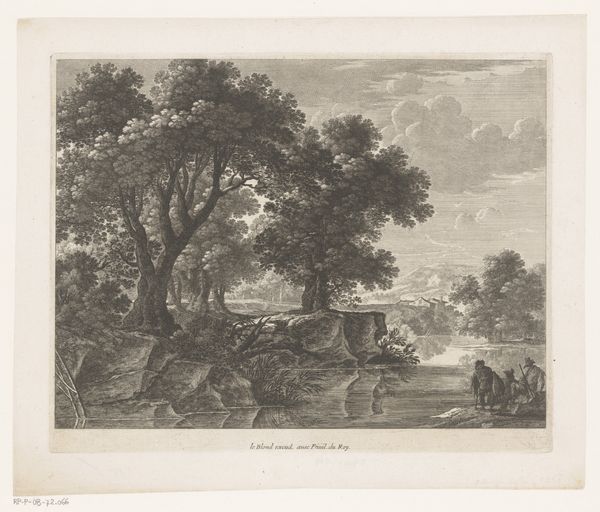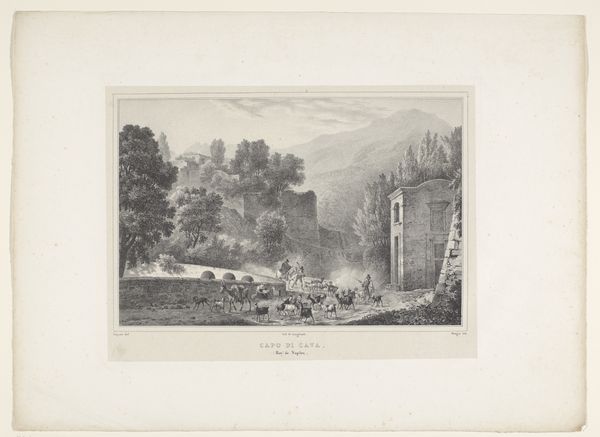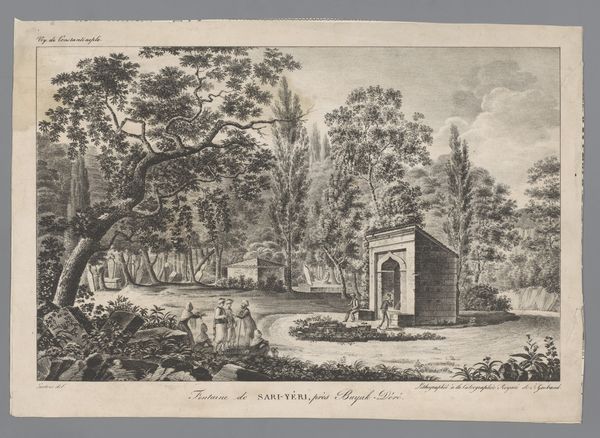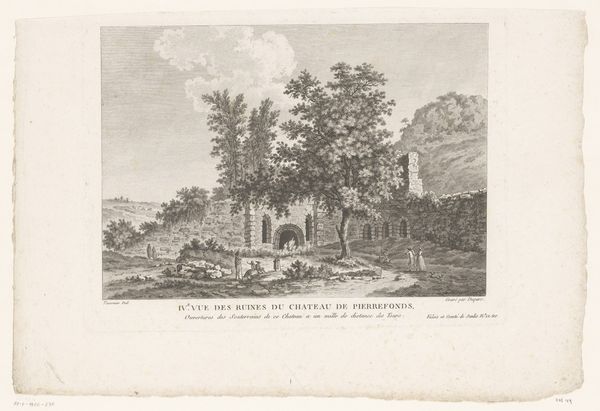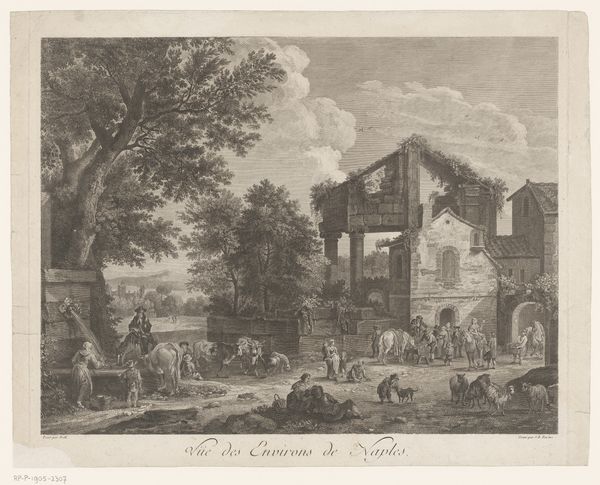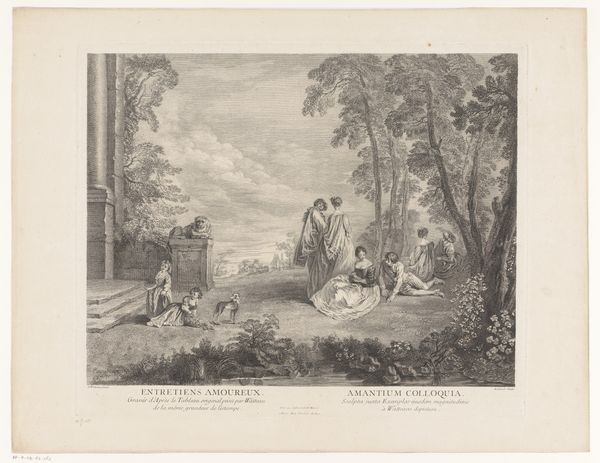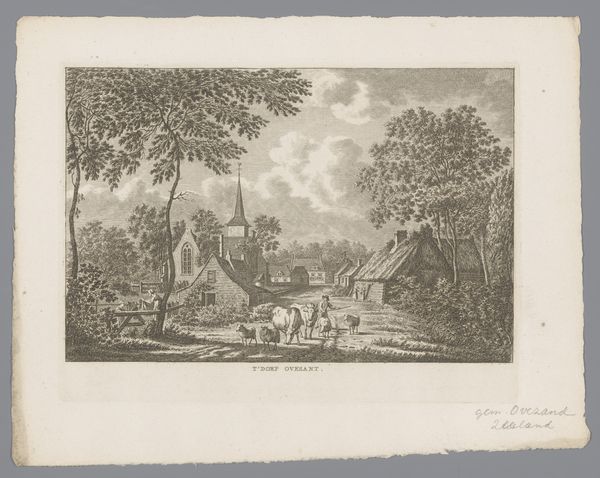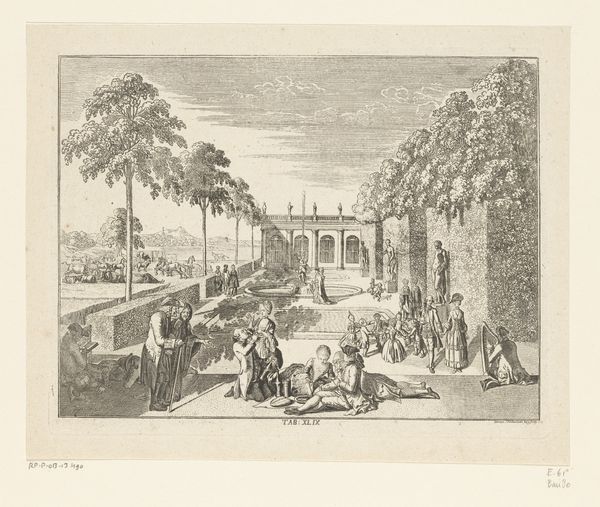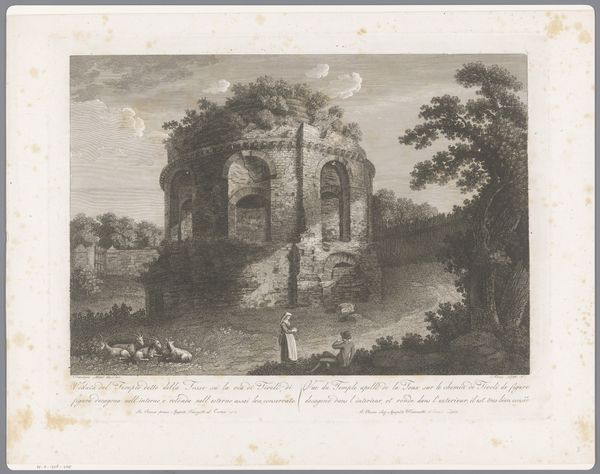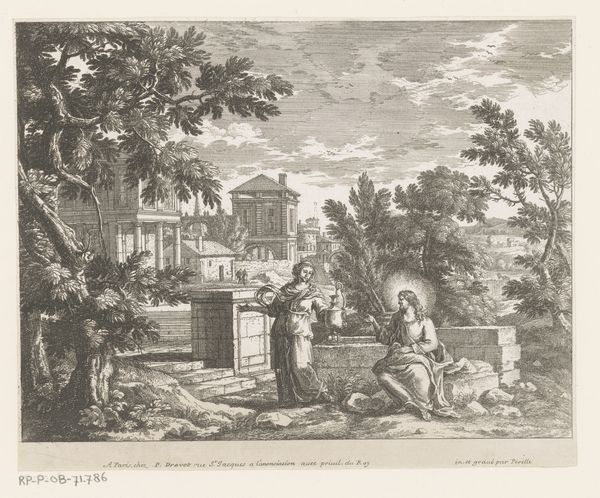
print, engraving
# print
#
old engraving style
#
landscape
#
genre-painting
#
engraving
#
rococo
Dimensions: height 354 mm, width 419 mm
Copyright: Rijks Museum: Open Domain
Curator: This engraving, "Vier vrouwen en drie mannen bij een watermolen," made in 1762, intrigues me from a material perspective. Editor: Indeed, what stands out to me is the fine detail achieved through the engraving technique. I find myself curious, what kind of story is this print trying to tell? Curator: Think about the physical labor involved in its creation: the engraver's hand, the paper made from pulped materials, and the societal structures enabling the leisure time depicted. What narratives are etched into the lines of this scene? Is it purely an aesthetic portrayal, or does it offer commentary on class, labor, and landscape? Editor: I see what you mean. So the very *act* of creating it becomes a way of understanding society? Is it less about the finished image and more about the journey from raw materials to the artwork itself? Curator: Precisely. Look at the watermill; it symbolizes a confluence of resources: land, water, human ingenuity. This connects the people to nature via labour. Notice anything particularly striking in terms of the labor implied versus what’s actually portrayed? Editor: Well, they're definitely *not* milling grain! They're almost posed in this idyllic landscape, it romanticizes working alongside these tools that harness nature. Curator: The consumption and portrayal of rural labor in that era were deeply intertwined with social power and idealized narratives. This work of art acts more like a promotional material in which they glorify natural exploitation via hard labor! It might point to the growing divide between the landed gentry who enjoyed a life of leisure, consuming landscape and the materials produced, and those who engaged in more physically intensive activities! Editor: That gives me a completely different lens for looking at this piece; seeing not just the image, but also its context and underlying economic narrative. Curator: Indeed. By exploring the production and purpose, and also the intent behind the making of art, we unearth its socio-political implications, giving our historical comprehension a whole new breadth.
Comments
No comments
Be the first to comment and join the conversation on the ultimate creative platform.
